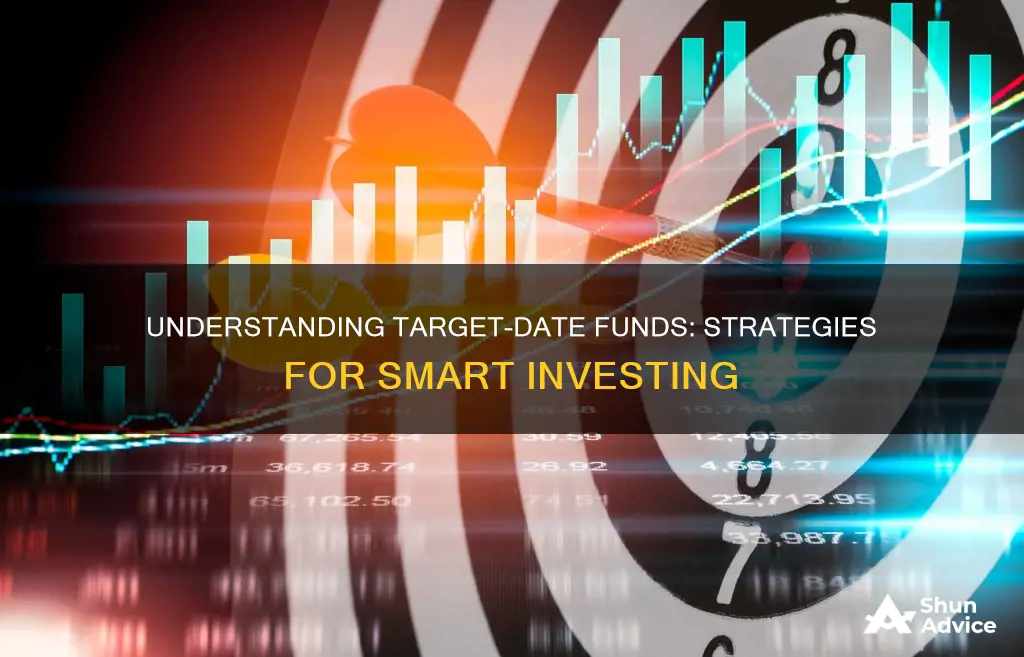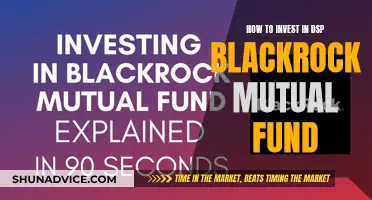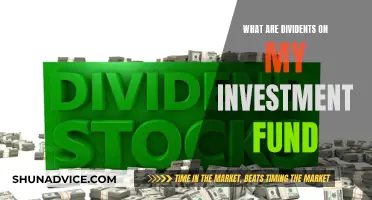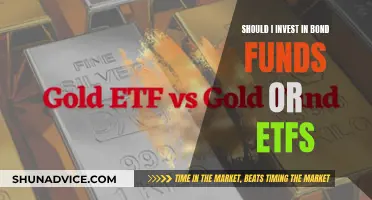
Target-date funds, also known as life-cycle funds, are a popular investment option for retirement planning. These funds simplify the process of investing for retirement by automatically adjusting the asset allocation based on an investor's time horizon and risk tolerance. When considering an investment in a target fund, it is important to understand how these funds work, their advantages and disadvantages, and how to choose the right one for your needs.
| Characteristics | Values |
|---|---|
| Type of Fund | Long-term investment fund |
| Investment Type | Mix of stocks, bonds, and other investments |
| Management | Managed by a professional |
| Investor Involvement | Passive |
| Risk | High initially, gradually reducing over time |
| Returns | Not guaranteed |
| Fees | Higher than other passive investments |
| Tax | Taxable income generated each year |
| Ideal Investor | Hands-off, not actively involved in investment choices |
What You'll Learn
- Target-date funds are designed to simplify retirement investing
- They are also known as life cycle funds or birthday funds
- Target-date funds are geared towards retirement
- They are a long-term investment account with a one-size-fits-all strategy
- Target-date funds are a popular choice among investors saving for retirement

Target-date funds are designed to simplify retirement investing
Target-date funds, also known as life-cycle funds or birthday funds, are designed to simplify retirement investing. They are long-term investment accounts that automatically adjust over the years as the investor approaches retirement.
When investing in a target-date fund, all you need to do is pick the fund closest to your retirement year. The fund will then be managed by professionals, who will invest in a diversified mix of stocks, bonds, and other investments. As you get closer to retirement, the fund will gradually shift from more risky stocks to less risky bonds. This shift in asset allocation is called a "glide path".
Target-date funds are popular offerings in 401(k) plans and are also an option for people investing in individual retirement accounts (IRAs). They are offered by all the big fund families, such as Vanguard, Fidelity Investments, and T. Rowe Price, among others.
While target-date funds simplify retirement investing, it is important to keep in mind that they are not a one-size-fits-all solution. The asset allocation and glide path can vary from fund to fund, so it is important to compare options and choose the one that best matches your risk tolerance and investment goals. Additionally, target-date funds may charge higher fees than other types of funds, so it is crucial to consider the expense ratios before investing.
Pension Funds' Investment Choices: What, Why, and How?
You may want to see also

They are also known as life cycle funds or birthday funds
Target-date funds, also known as life cycle funds or birthday funds, are a type of investment fund that is rebalanced periodically to optimise returns over the long term. They are designed for investors with specific goals that require capital at set times, most commonly for retirement investing. The funds are named after their target retirement date, for example, the "Vanguard Target Retirement 2070 Fund" is designed to reach the investor's objective in 2070.
Life cycle funds are asset-allocation funds in which the share of each asset class is automatically adjusted to lower risk as the desired retirement date approaches. This usually means that the percentage of bonds and other fixed-income investments increases. The funds are based on the idea that younger investors can handle more risk, although this is not always the case. A life cycle fund may be appropriate for investors who want to take a very passive approach to retirement.
The benefit of life cycle funds is that they offer convenience, with investors able to put their investing activities "on autopilot". The funds also offer a preset glide path, which provides investors with greater transparency and confidence in the fund. However, one of the criticisms of life cycle funds is that they are simplistic and use a one-size-fits-all strategy. The funds are based on a person's retirement age, not their risk tolerance, and two people of a similar age could have very different risk profiles.
Quant Active Fund: Smart Investing Strategies for Beginners
You may want to see also

Target-date funds are geared towards retirement
Target-date funds are designed to simplify retirement investing. They are long-term investment accounts that are automatically adjusted over the years as the investor approaches retirement. They are also known as life cycle funds or birthday funds.
These funds use the investor's age and the number of years until their likely retirement to select investments, with the allocation changing annually. A person with a few decades until retirement will have a portfolio with a heavier tilt toward stocks. Someone with ten years or fewer until retirement will have a higher bond allocation.
Target-date funds are offered by all the big fund families, such as Vanguard, American Funds, Fidelity Investments, and T. Rowe Price, and are often included in 401(k) plans. They are popular because they simplify the process for participants and offer a “set it and forget it” investment option.
Here's how they work: an investor picks the year they think they'll need to access the funds, and then the fund management company takes care of the rest. The fund managers use a predetermined time horizon to fashion their investment strategy, which typically involves starting with riskier stocks and gradually moving toward more conservative investments like bonds as the investor gets closer to retirement. This is known as the fund's glide path.
Target-date funds can be a great investment option for those who don't want to constantly reconsider and adjust their investment choices. However, it's important to keep in mind that they may not suit everyone's needs and goals, and there may be cheaper alternatives.
How to Choose the Right Managed Funds
You may want to see also

They are a long-term investment account with a one-size-fits-all strategy
Target-date funds are long-term investment accounts designed to simplify retirement investing. They are geared towards investors who want a "set it and forget it" approach, offering an all-in-one way to invest for retirement. These funds are adjusted over time as the investor approaches their retirement age, with the portfolio manager changing the mix of investments annually to lower investment risk.
Target-date funds follow a one-size-fits-all strategy, using the investor's age and target retirement date to determine the appropriate asset allocation. This means that two people of similar ages could have very different risk profiles, but they would still be placed in the same bucket based on their age. While this approach simplifies investing, it may not be suitable for everyone as it does not take into account individual risk tolerance and investment goals.
Here's how it works: when you pick a target-date fund, you select the year you plan to retire, and the fund's portfolio manager takes care of the rest. In the early years, the fund invests heavily in riskier growth stocks to rack up gains while the investor has time to recover from any short-term losses. As the target retirement date approaches, the fund gradually shifts towards more conservative investments, such as bonds, to consolidate gains and avoid untimely losses. This makes target-date funds ideal for investors who want a hands-off, long-term investment strategy and don't want to actively manage their portfolio.
However, it's important to keep in mind that target-date funds have some limitations. They follow a predetermined strategy that may not align with an individual's changing goals and needs. Additionally, they may put too much weight on certain asset classes if the investor has other investments outside of the fund. While target-date funds offer a simplified approach to retirement investing, they may not be suitable for everyone, and it's essential to consider your personal circumstances and financial goals before investing.
Ginnie Mae Funds: A Smart Investment Strategy
You may want to see also

Target-date funds are a popular choice among investors saving for retirement
Target-date funds are geared towards sensible retirement planning and are often a default option in 401(k) plans. They are also known as "set it and forget it" funds, offering a simple, all-in-one way to invest. They are offered by all the big fund families, such as Vanguard, Fidelity, and T. Rowe Price, and are usually included in company 401(k) plans.
These funds use a person's age and the number of years until their likely retirement to select investments, with the allocation changing annually. For example, a person with a few decades until retirement will have a portfolio with a heavier tilt towards stocks, while someone with 10 years or fewer will have a higher bond allocation.
Target-date funds are also popular because they simplify investing. All the investor has to do is pick the fund closest to their retirement year, and a portfolio manager will make trades and adjust the mix of investments over time. This takes the guesswork and stress out of saving for retirement, allowing investors to focus on saving.
However, it's important to note that target-date funds are not a perfect solution. They are usually based on a one-size-fits-all strategy and may become too conservative near the retirement date. Additionally, investors are not actively involved in investment choices, and the funds may charge high fees.
When choosing a target-date fund, it's essential to evaluate the costs and compare the holdings and asset allocation with any other investments you might have. While target-date funds are designed to be an investor's only holding, they don't need to be, and you can choose to have multiple investment vehicles.
A Beginner's Guide to Mutual Fund Investing with E-Trade
You may want to see also
Frequently asked questions
A target-date fund is a long-term investment account that is automatically adjusted over the years as the investor approaches a specific milestone, such as retirement. The fund's portfolio managers use a predetermined time horizon to fashion their investment strategy, which relies on riskier stocks in the early years, moving gradually toward fixed-income investments like bonds in later years.
To choose a target-date fund, you first need to know your target retirement date. Then, you pick the fund with a date closest to the year you plan to retire. For example, if you plan to retire in 2030, you would choose a target-date 2030 fund.
Target-date funds are popular with investors, particularly those saving for retirement, as they simplify the investment process and reduce the risk of losses as the target date approaches. They are also well-suited to those who want a hands-off approach to their investments.
Target-date funds are often criticised for their one-size-fits-all approach, which may not suit an individual's changing goals and needs. They can also be relatively expensive in terms of fees.







